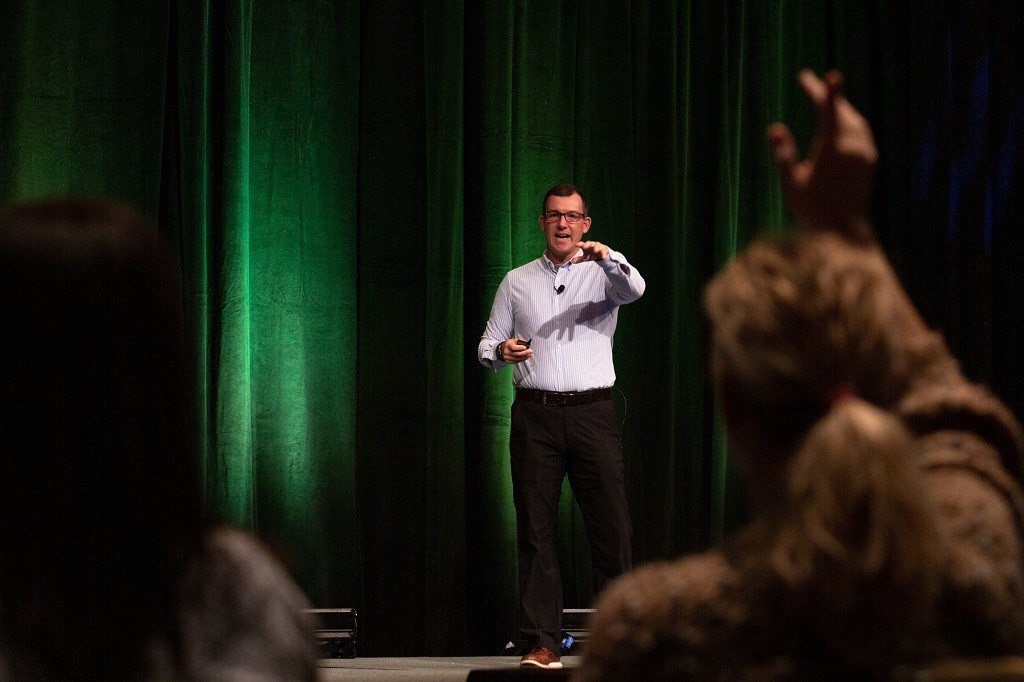The theme of The 2019 Running Event last week in Austin, TX, and, indeed, of the entire run specialty business was set on Tuesday during the inaugural Best Running Stores Summit, a follow-up to the immensely successful Best Running Stores in America event in Arizona last spring. “The Future is Personal,” retail consultant and frequent TRE speaker Parker Karnan told a packed audience of the best and brightest of running retailers from across America.
“The footprint of brick-and-mortar retail is shrinking,” Parker told the audience, which definitely was not shrinking since many of them sat on the floor or stood in the back of the packed meeting room. “We are here to talk about how to keep that from happening to run retail.”
To that end, here are the bullet points Karnan wants the Best Running Stores – and all running stores – to realize and consider.
- Fewer Bricks, Less Mortar. In fiscal year 2018, 5844 retail stores in America closed, while 3258 opened, for a net loss of 2586 retail stores. But that pales in comparison to 2019, when 9271 stores closed and only 4341 opened, for a net loss of 4930 stores.
- The biggest impact of this loss has been felt at B and C malls, which means the A malls are doing fine and that there is an increase in easy-to-reach neighborhood strip malls.
- 2014 was the peak year for sales, running participation and race finishers.
- In 2018, core participation decreased, but casual participation grew. Karnan urged retailers to adapt to this changing business model and be sure to keep their eyes on these casual runners.
- There was six percent industry sales growth in 2019, which beat the 2014 high in sales. But fewer pairs were sold than in that record year, meaning prices have gone up — to a sweet spot of $130.
- Every year 33 percent of run specialty customers are new and only eight percent of Americans are core runners. “We have to change our business so we don’t have this revolving door of customers,” Karnan urged. By the way, he added, it is six times more expensive to attract a new customer than it is to retain an existing customer.
- Part of that change needs to involve knowing that customer experience is more important than price in earning customer loyalty.
- A key strategy in 2020 will be to link the physical store with its digital footprint to forge a personal contact through the brand.
- An FMO culture (Fear of Missing Out) plays into the hands of savvy retailers who can brand their community. “Building a brand community will allow you to get more sleep at night,” Karnan advised.
- BOPUS (But Online, Pick Up In Store) is a big deal at retail now, with 81 percent of Internet users utilizing BOPUS last year.
Karnan left the packed audience with this advice to set a path towards 2030. “You need clean data, inventory visibility, centralized customer records, convenient sales options, nimble API technology and automation,” he said. The rest is simply remembering that, he repeated, “The Future is Personal.”







